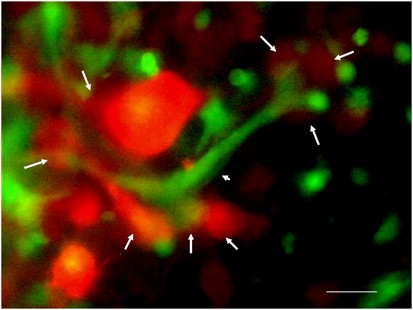Jellyfish: Nature's Luminescent Hope in Cancer Treatment
In the vast expanse of our oceans, a creature once considered a mere nuisance to beachgoers is emerging as an unlikely hero in the fight against cancer. Jellyfish, with their ethereal beauty and bioluminescent glow, are revolutionizing the field of cancer research and treatment. This article delves into the fascinating world where marine biology meets oncology, exploring how these gelatinous organisms are illuminating new pathways in our understanding and treatment of cancer.
The Green Fluorescent Protein: A Glowing Discovery
At the heart of this groundbreaking research lies a protein that has captivated scientists for decades: the Green Fluorescent Protein (GFP). First isolated from the Aequorea victoria jellyfish in the early 1960s, GFP has since become an indispensable tool in biomedical research.
"The discovery and development of GFP was a game-changer. It's allowed us to see the unseen in biology," explains Dr. Elena Rodriguez, a leading researcher in marine-derived biomedicine at the Ocean Cancer Institute.
GFP's unique ability to glow green when exposed to blue light has opened up new avenues for visualizing cellular processes, including the growth and spread of cancer cells. This protein, and its subsequent engineered variants, have become crucial in numerous applications within cancer research and beyond.
Applications in Cancer Research: Illuminating the Path Forward
The impact of GFP on cancer research has been nothing short of revolutionary. Scientists are leveraging this jellyfish-derived protein in several key areas:
1. Real-time Tracking of Cancer Cells
By genetically modifying cancer cells to express GFP, researchers can now observe their behavior in real-time. This breakthrough allows for unprecedented insights into how cancer cells move, divide, and respond to various treatments.
2. Drug Efficacy Monitoring
GFP is being used to monitor the effectiveness of cancer drugs with remarkable precision. By tagging cancer cells with GFP, scientists can visually assess how well a particular treatment is working, leading to more efficient drug development processes.
3. Development of Targeted Therapies
The ability to visualize specific proteins and cellular processes has accelerated the development of targeted cancer therapies. Researchers can now identify and track specific molecules involved in cancer progression, leading to more precise and effective treatments.

Fluorescent imaging of cancer cells using GFP technology by Robert M Hoffman accessible here
Beyond GFP: Other Jellyfish-Derived Compounds in Cancer Research
While GFP remains the star of the show, researchers are discovering that jellyfish have more to offer in the fight against cancer:
- Mucin Proteins: Certain species of jellyfish produce mucin proteins that have shown promise in reducing the side effects of chemotherapy.
- Collagen: Jellyfish-derived collagen is being studied for its potential in drug delivery systems, offering a biocompatible and biodegradable option for targeted cancer treatments.
- Bioactive Peptides: Researchers have isolated peptides from jellyfish venom that demonstrate anti-cancer properties, opening up new possibilities for drug development.
Challenges and Future Directions
Despite the incredible progress, the journey from jellyfish to cancer treatment is not without its challenges. Extracting and purifying these compounds on a large scale remains difficult, and translating laboratory successes to clinical applications requires extensive testing and regulatory approvals.
However, the potential benefits far outweigh these obstacles. Dr. Rodriguez remains optimistic: "We're just scratching the surface of what jellyfish can offer in cancer treatment. The next decade could see remarkable advancements stemming from these marine organisms."
Conclusion: A Bright Future
As we continue to explore the potential of jellyfish-derived proteins and compounds, we stand on the brink of a new era in cancer treatment. The journey from the depths of the ocean to the forefront of cancer research underscores the importance of biodiversity and the often unexpected sources of scientific breakthroughs.
The story of jellyfish in cancer research is a testament to the power of curiosity-driven science and the untapped potential of our oceans. As we look to the future, these luminescent creatures may well hold the key to illuminating new paths in our ongoing battle against cancer, offering hope to millions around the world.
This website was made in 5 minutes and two claude 3.5 sonnet prompts.
